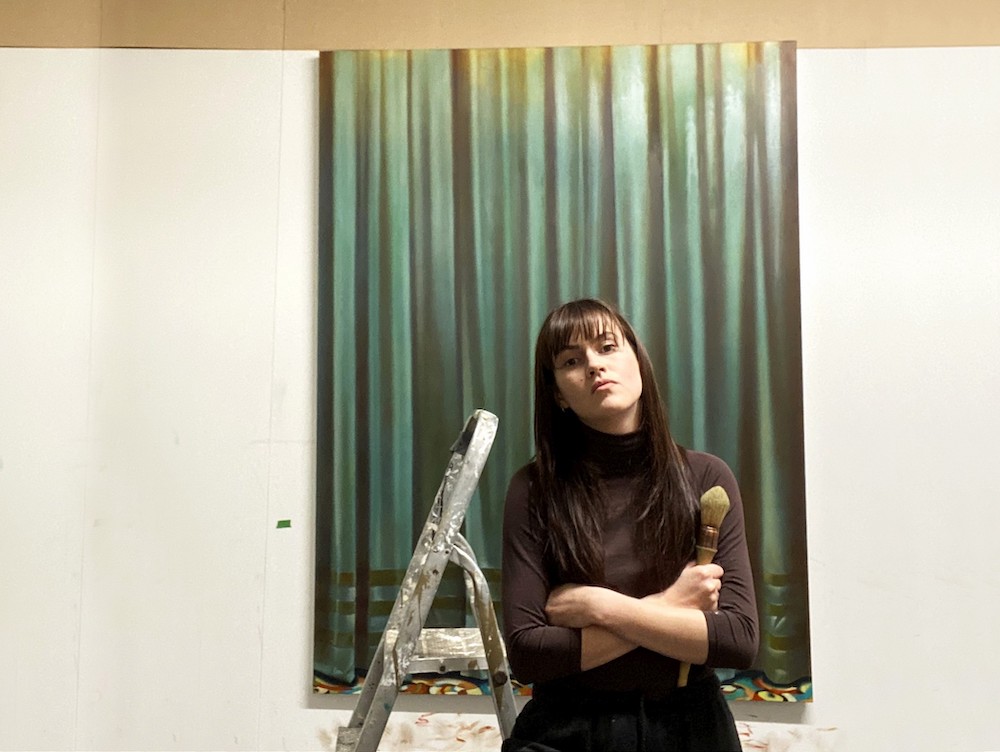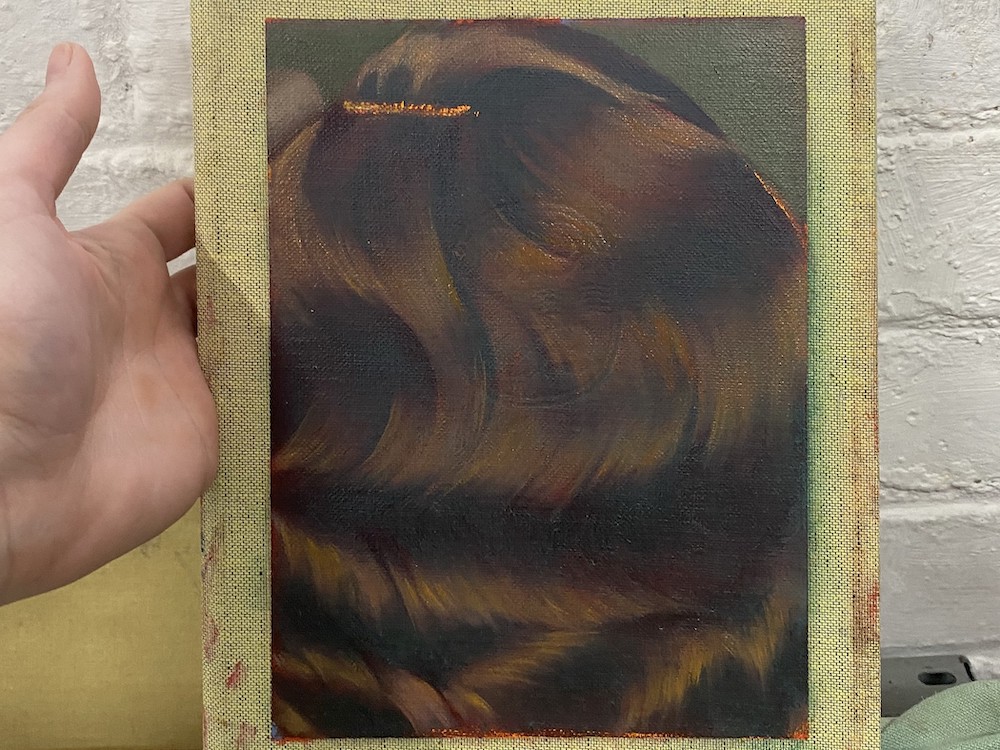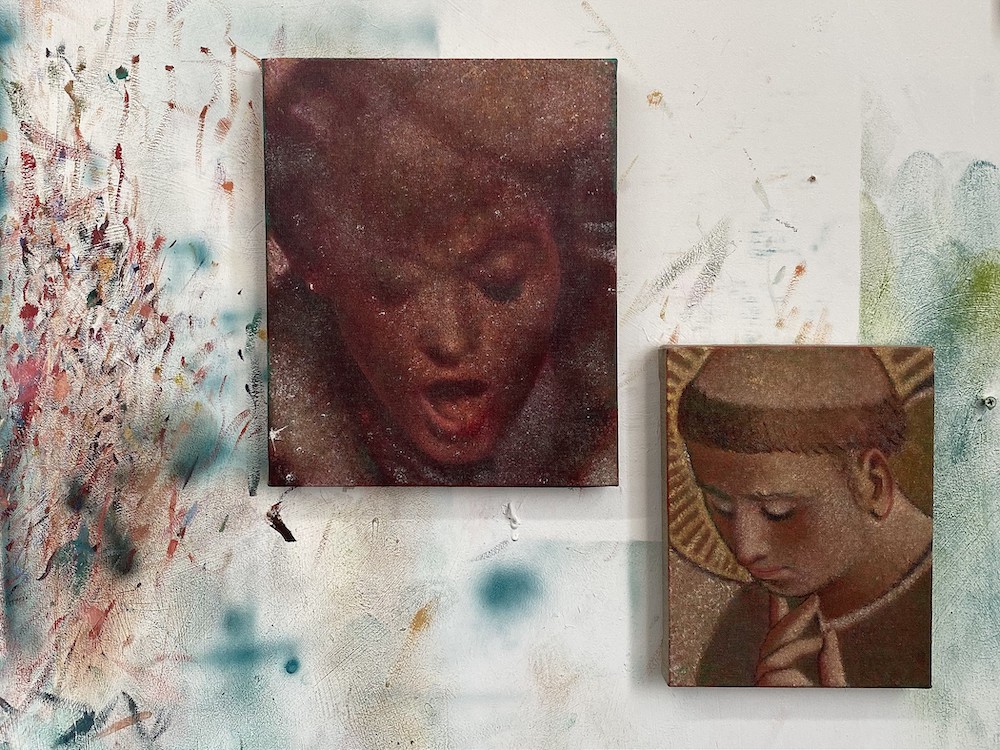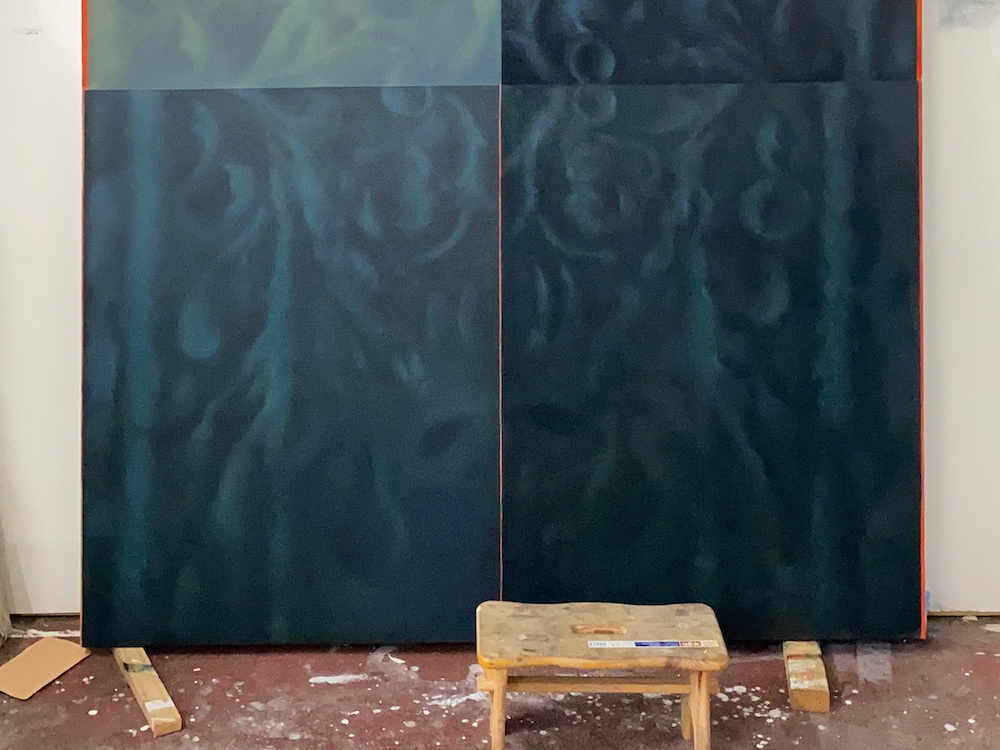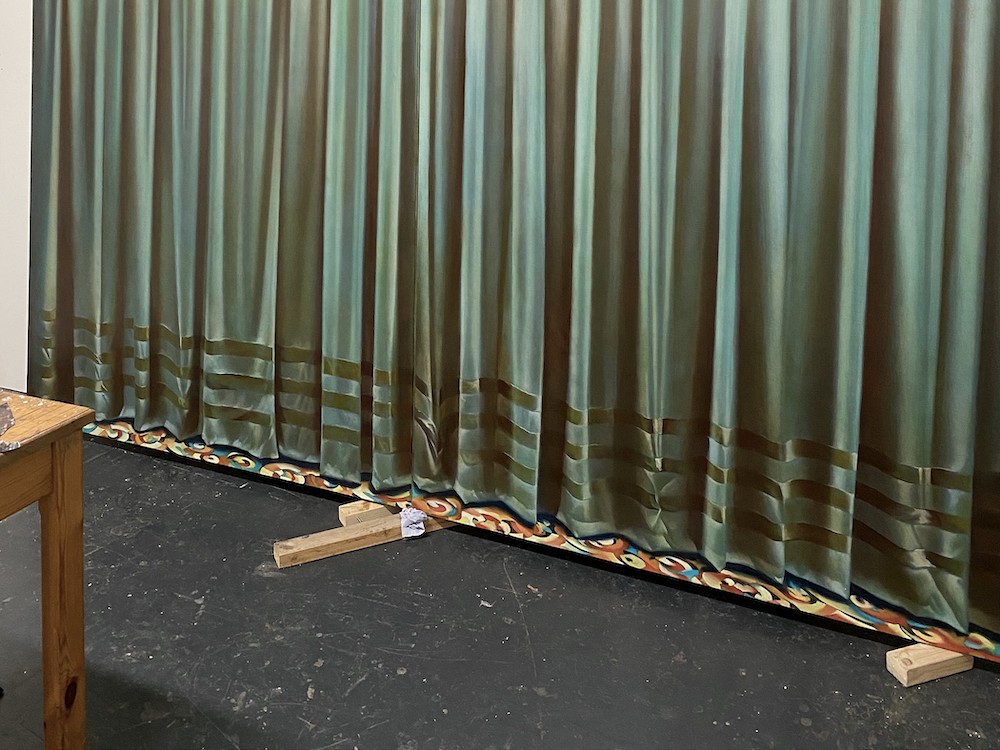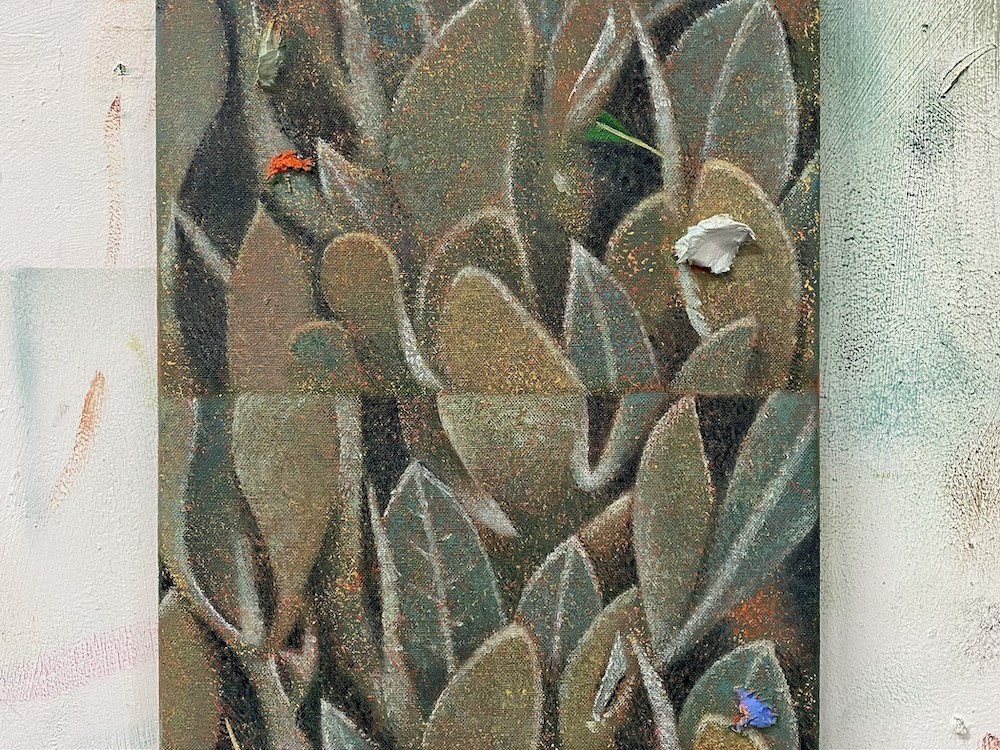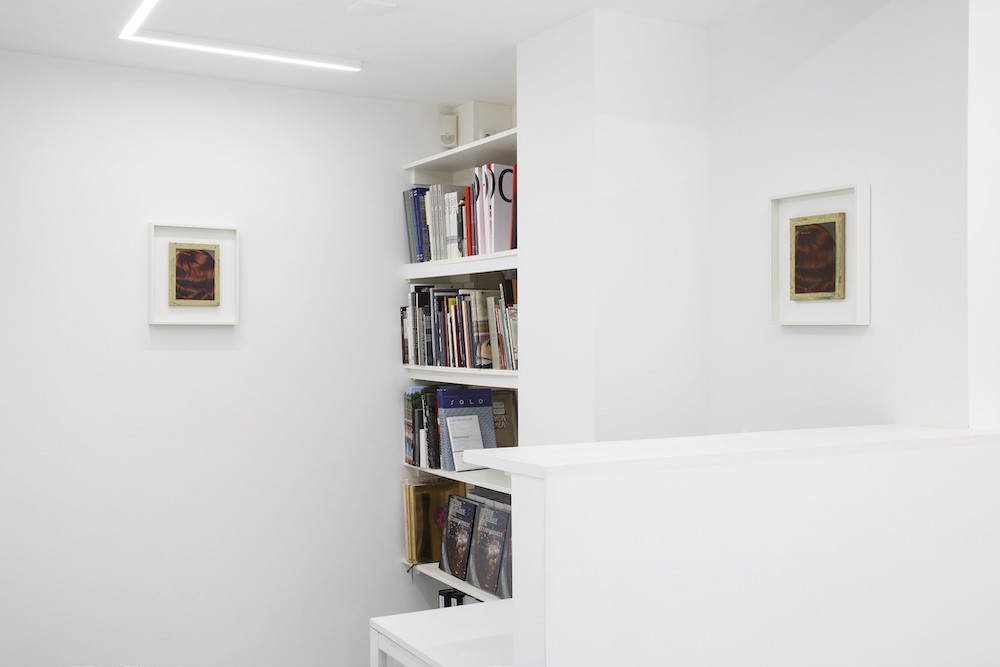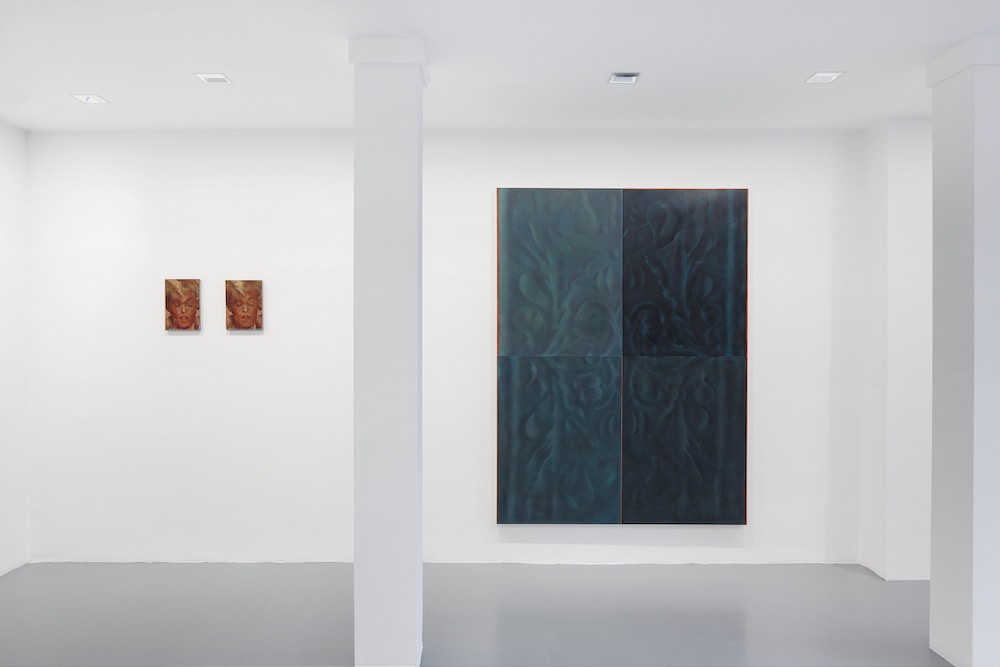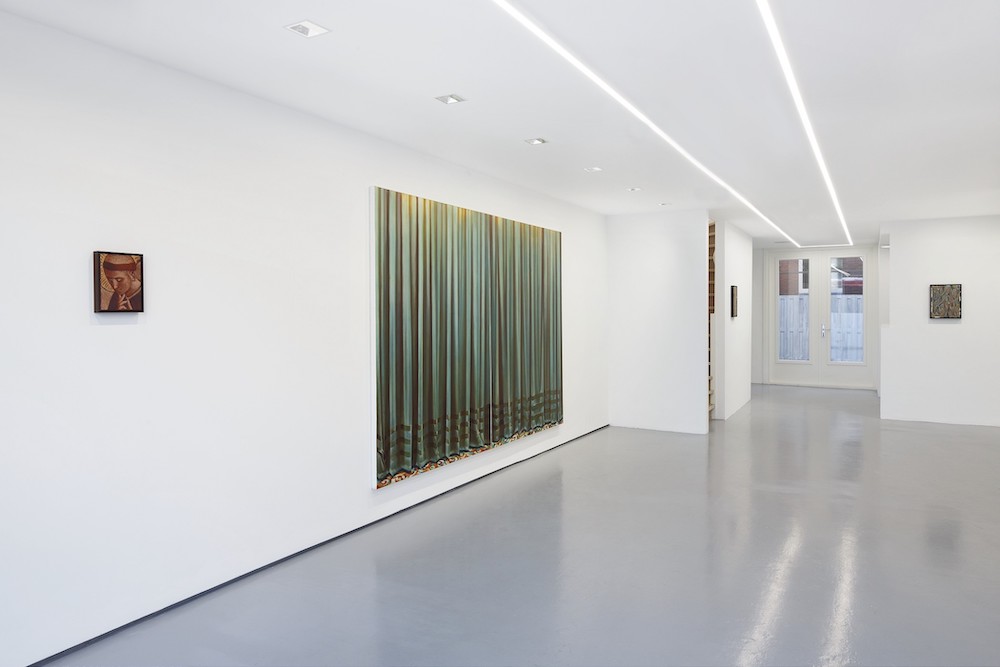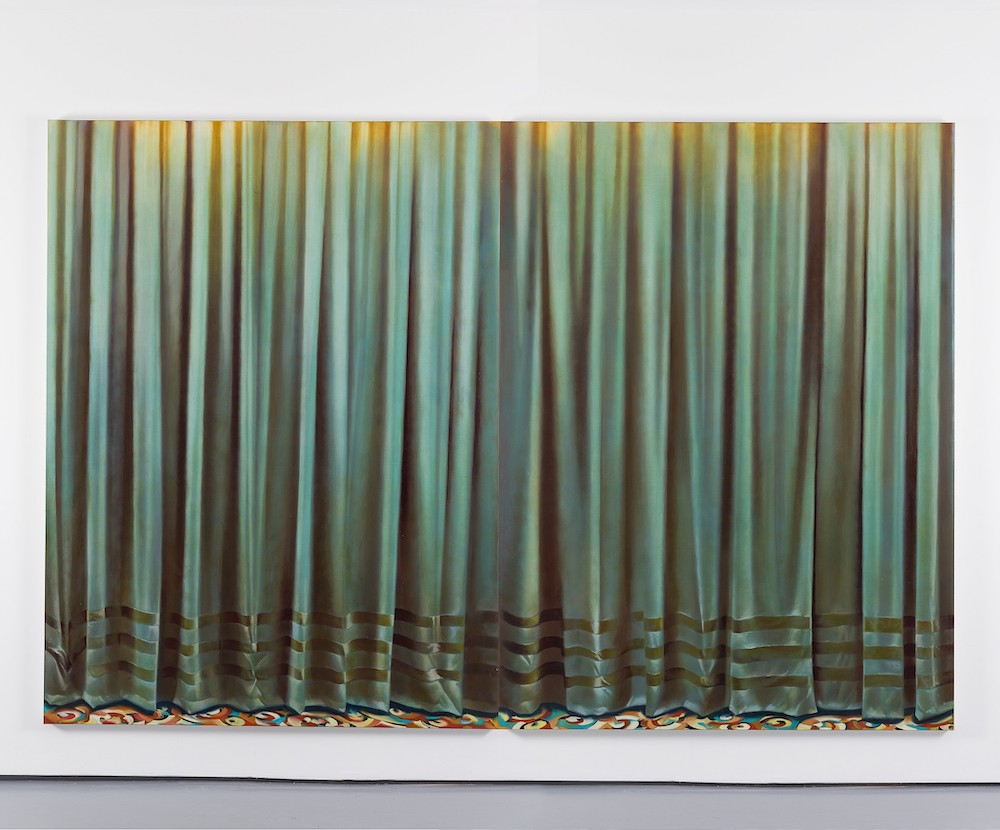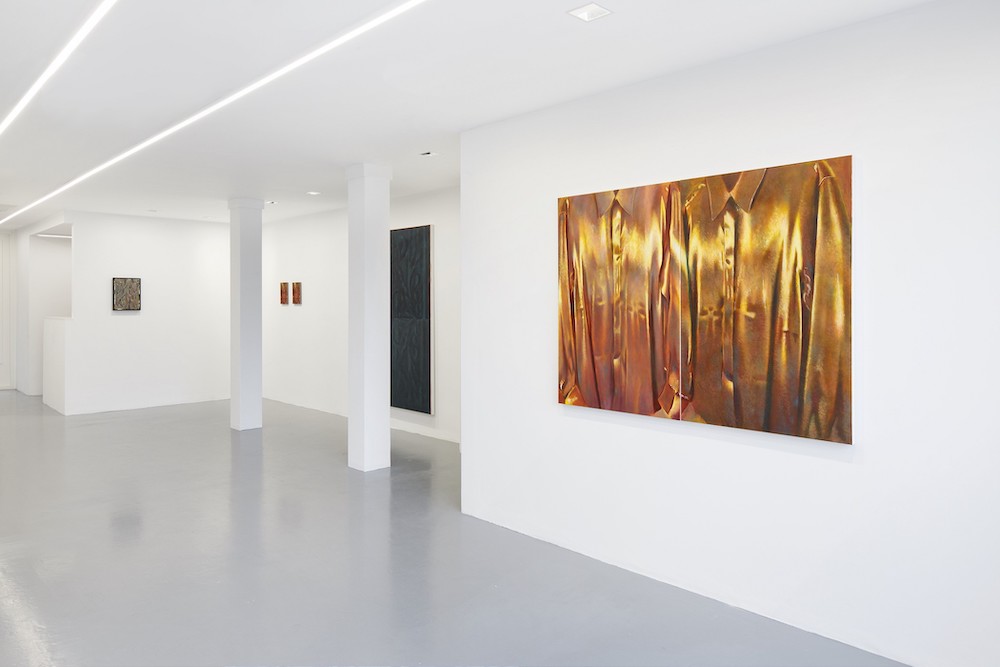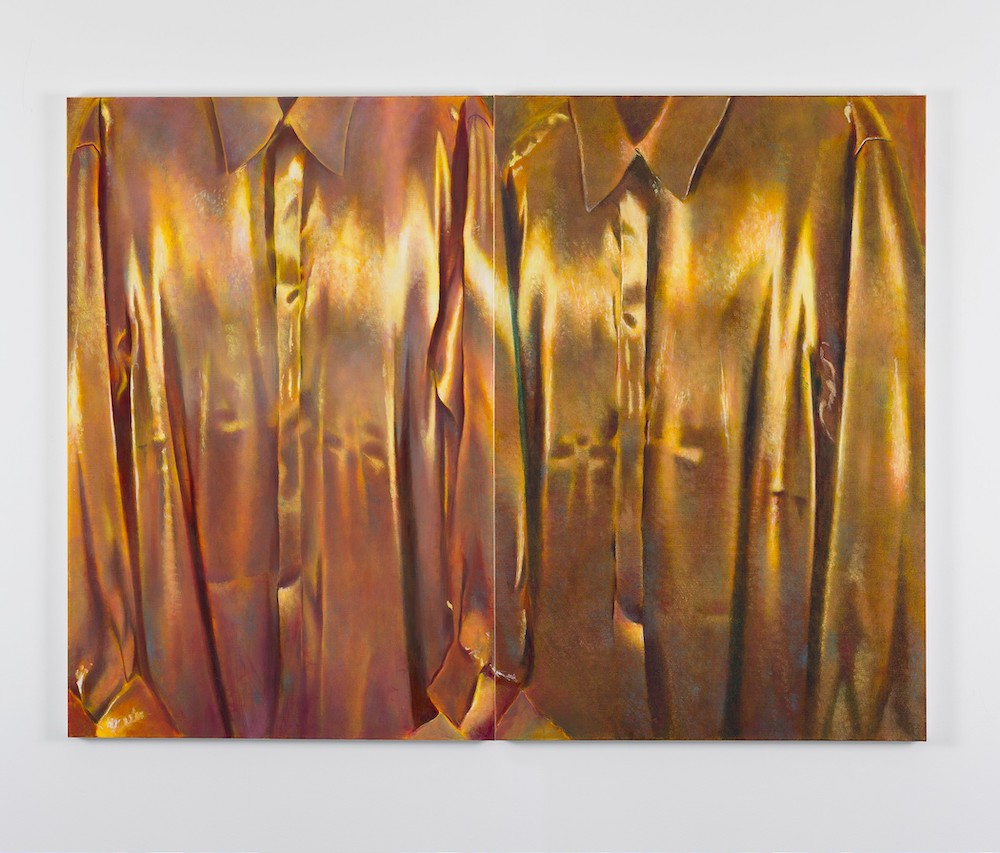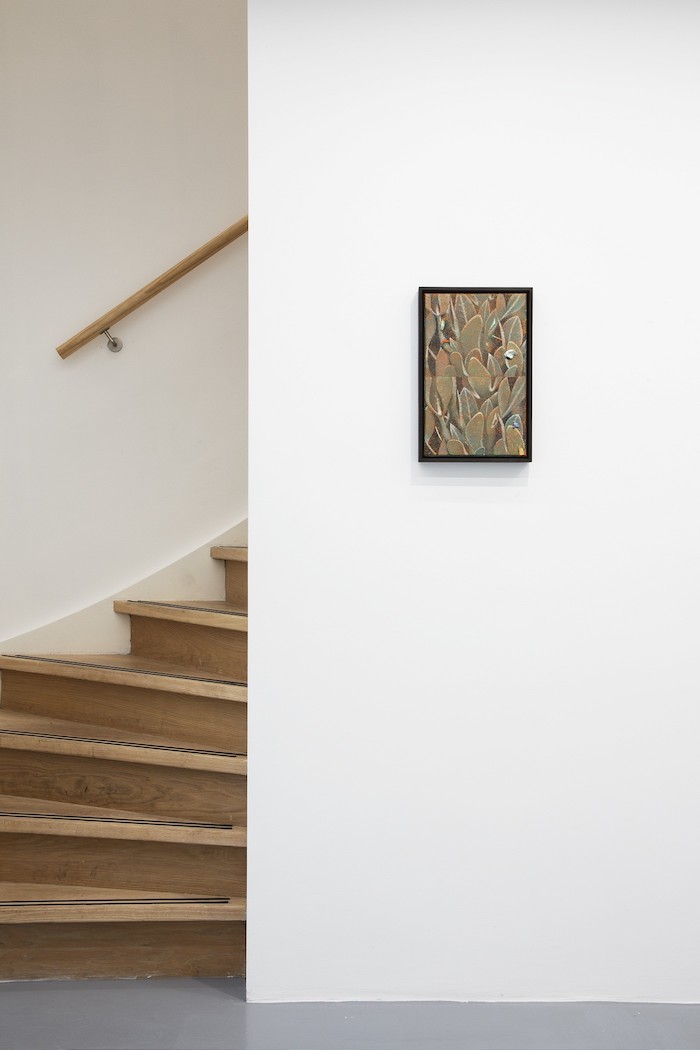If you allow us to get really nerdy here, to really get into the matter of creating images with paint on canvas, the micro-location where this magic actually happens is the surface. The raw, flat exterior of the stretched canvas on one end, meeting the tip of a brush covered with pigment, results in visible marks capable of constructing quite literal wonders. And this meeting point and the ability to recreate certain realities in a new light is the field of interest for the Manchester-based artist Louise Giovanelli who is opening her Dutch solo debut, A Priori, with Grimm Gallery in Amsterdam this weekend.
Interested in the possibilities of paint and painting, the core of Giovanelli's practice involves reinventing the existing imagery and giving it a new meaning, often using repetition as an important tool. Working with stills from staged performance and film, she removes these snapshots of made-up reality and rebuilds them in a new light, appropriating new qualities to them. Detached from the original context they've existed in and recreated with an accent on a different aspect, the images now exist on their own, displaying the prospects of painting as a technique and medium. Shimmering gold blouses, theatre curtains, movie stars in an ecstatic state, or a small section of a religious fresco are both exploring and abstracting the material quality of paint while constructing their own space and atmosphere. Whether gently dabbing on the surface in order to create a peculiar, evocative glow, or sprinkling thick paint flecks on top of the rendered image, Giovanelli's representation becomes ambiguous as she explores the luminous qualities of paint and the ways its surface conditions the content.
Curious to hear more about such a scrutinizing approach to painting, we got in touch with the artist and talked about her process, her methods, her techniques, and this particular exhibition and the body of work she's presenting.
Sasha Bogojev: Did you feel any special motivation or challenge having a first solo show in a country with such a rich history of figurative painting and do you have any special relationship with the Dutch/Flemish painting?
Louise Giovanelli: The Northern Renaissance is the first artistic period I became truly obsessed by. The highly rendered iconographic paintings of Jan Van Eyck, Robert Campin, Dirk Bouts are how I learned to paint. One of my most memorable and significant trips was one I made to see the Ghent Altarpiece. This spurred a whole series of pilgrimages to see specific historical paintings in situ, all of which were part of the Ducth/Flemish School.
What were the reasons this particular work resonated with you?
I always enjoyed the Northern Renaissance more than the Italian, I think because of their use of empirical rather than linear perspective - an emphasis on the felt and perceived rather than the measured. Also, their focus on color and detail was unrivaled.
Of course with any creative movement one admires, you begin to delve deeper to discover the movements that influenced and preceded - going back and back. So now I’m somewhere in 1200BC, fascinated by Byzantine and proto-renaissance painters.
What draws you towards erasure or the undoing of a prior meaning of images you're working with and how did that practice develop?
I'm always striving for narrative ambiguity in my work. It’s important not to give too much away, as then the painting becomes an illustration rather than a painting - there’s an important difference, and when that happens it loses power. Paintings that captivate me are ones where there are gaps in knowing. For me, ambiguity is what sustains a painting and makes it endure. 
Does your work ever have a narrative or common theme as a whole, in a presentation like the one you're showing in Amsterdam?
Individually my works function as fragments of a narrative. Shown together they form a dialogue and within that meta-narratives appear. Through this associative process, the meaning is simultaneously formed and undone.
In many of my works, especially in my most recent show at Grimm, there is a persistent temporal feeling. The feeling that one has just missed or is just about to perceive an action taking place.While clearly figurative realistic on the surface, your work is in reality very technique-focused.
How do you balance between the two and what pushed your interest towards such an almost "nerdy" approach to dissecting the painting?
For me, it is important that my work is informed by and acknowledges the cultural contributions painting has previously made. For this reason, my technique is rooted in a traditional approach.
Can you please elaborate on some of the technique you're using and why do you enjoy them?
I use thin layers of highly pigmented paint to build up form, light, and shade. I often make under-paintings that act as a blueprint for the rest of the painting.
I am drawn to these techniques because they were based on the core principle of light. The physicality of the light in the room, the light emanating from the primed canvas, and how this interacts with pigments.
Yes, that accent on the light is definitely something that is permeating through your work. How do you achieve such a sparkling effect?
For my most luminous works, I tend to work with single pigment colors in thin layers on a bright white ground. By using the least amount of the best quality pigment you can create real painted light. Mixing pigments on a palette and then applying it just isn’t the same. It produced a deadness.
Although recently this deadness is something I’ve intentionally sought. For example in the Criss paintings, the paint application is Alla prima, built up over time. Here I was intentionally pursuing a cloudy, blurred dullness - a haze of paint. I am always seeking such contradictions. I enjoy opposing forces in tension.
Speaking of process, can you tell us a bit about the pieces with paint crumbs and what is the idea behind concealing the image in such a way?
These are dried paint flecks that I shave off other paintings and sprinkle on top of new ones. I like the idea of a painting being simultaneously illuminated and obscured by the remnants of paintings that didn’t make it. These paintings ultimately explore light phenomena. The surface contains the whole spectrum of colors and is combined in such a way that they cancel each other out when looked at from afar - coalescing and creating a muted grey effect.
Was the first time you're showing work with this effect?
I recently used this technique in a painting called Tenebrae that was part of a recent show I had opened at Workplace Gallery. Tenebrae is Latin for darkness, also - gloom and shadow of death. I’m interested in religious iconography, also ritual and ceremony.
The principal Tenebrae ceremony is the gradual extinguishing of candles upon a stand. This slowly reduces the light in the church. The last candle is hidden behind the altar, which is eventually also extinguished - leaving the service in total darkness. This centering of light, its intensity, and slow calibration towards obscurity - describes my approach to painting fundamentally.
So how do you translate this concept into your paintings?
That painting specifically contains this image of a foggy, almost bleached out curtain barely perceptible behind the hundreds of shards of light. On a material level - it contains the most ‘obscurity’ and visual noise out of all my works. It’s this combination of the ambiguous pictorial image and turbulent material surface which imbues it with the essence of the Tenebrae ritual. 
The new body of work includes pieces on book covers and some other repurposed materials. How much does the surface/texture direct your process?
I made the first book painting during lockdown when I was working from home and didn’t have access to my usual materials. I was happy to allow domestic restrictions guide a new series of work.
From a purely material perspective, the canvas-covered books were perfect ready-made surfaces. The color of the books dictated the direction of the works. For example in the Axis works, the yellow ochre coloration of the cover sparked the idea for a painting of blonde hair.
Like often in your practice, this show has 2 versions of the same image you've painted on the book covers. What sort of discoveries and revelations are you looking for or hoping for when repainting the same image?
Repetition has two functions in my work - as a practical learning mechanism and as a psychological and conceptual device. As a practical learning device, repetition is a strategy I use to explore nuances over an extended period of time. It is an approach akin to the idea of upgrades - a rhythmical repetition in order to check or ensure the validity of the image, its quality, and function. As a psychological device, it produces the sensation of the uncanny, of augmented reality, temporal displacement, and the supernormal. Deliberate repetition also urges the audience to look again, making the slow act of seeing itself the subject of the works.
Coinciding with the Amsterdam Gallery Weekend between November 26th and 29th, A Priori is the 2nd solo exhibition of the artist with the gallery, following her debut at their NY location back in March. At the same time, the gallery will also show Bad Reception, a presentation of new paintings by Eric White, which will be on view at their Keizersgracht location.

